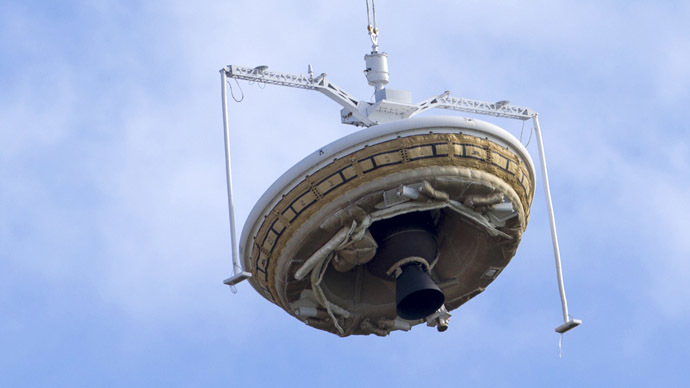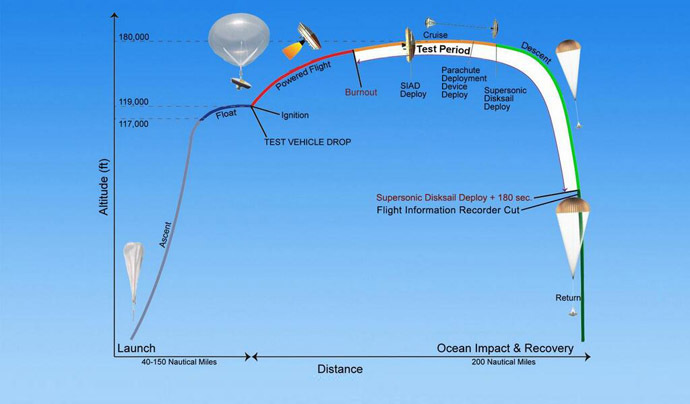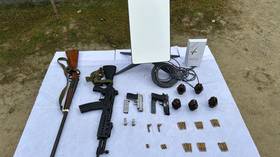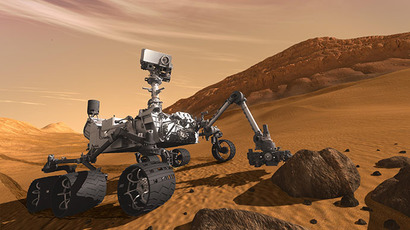'Bad chute' sours NASA 'flying saucer' test launch (VIDEO)

NASA has tested its saucer-shaped device for a Mars landing. The vehicle soared above the Pacific and splashed down after several hours. A malfunctioning parachute marred the last stages of the largely successful mission.
The test launch, postponed six times due to strong winds badly
affecting the mission, finally took place off the Hawaiian island
of Kauai, on Saturday.
READ MORE: Hawaii to imitate Mars for NASA space parachute test
The tested vehicle is called the Supersonic Inflatable
Aerodynamic Decelerator (SIAD) and is needed by NASA to land new,
heavier-than-before payloads on Mars. The current technology of
landing, which among others helped land the Curiosity rover on
Mars in 2012, has been in use since the 1970s.

The new device was launched on Saturday morning from the Pacific Missile Range Facility on the Hawaiian island of Kauai into the stratosphere, where the air is as thin as that on Mars. The SIAD was taken 50 kilometers (30 miles) up, first by a huge balloon attached to it and later by a rocket motor, which accelerated the ‘flying saucer’ to supersonic speeds.
Then an inflatable tube around the vehicle, made from the same
material as bulletproof vests, expanded to slow it down from Mach
4 (four times the speed of sound) to Mach 2.5. The next stage was
the deployment of a gigantic parachute – 33 meters in diameter –
twice as big as the one that helped land the Curiosity rover on
Mars two years ago.
However, the parachute wouldn’t properly unfurl this time.
"Please inform the recovery director we have a bad
chute," a mission official ordered when the defect was
noticed, AP reports.

Nevertheless, the SIAD still managed to splash down into the
Pacific, and the $150 million experimental flight was deemed a
success.
"What we just saw was a really good test," said NASA
engineer Dan Coatta with the Jet Propulsion Laboratory in
Pasadena, California.
Now scientists are eager to recover a "black box," that was
designed to separate from the device when it splashed down. A
ship has been sent to look for the box and this might shed light
on what went wrong with the parachute.
NASA researchers plan to carry out several more similar test
flights next year. If the technology is approved, it could be
used to assist landing loads on Mars weighing at least twice as
much as was previously managed.














